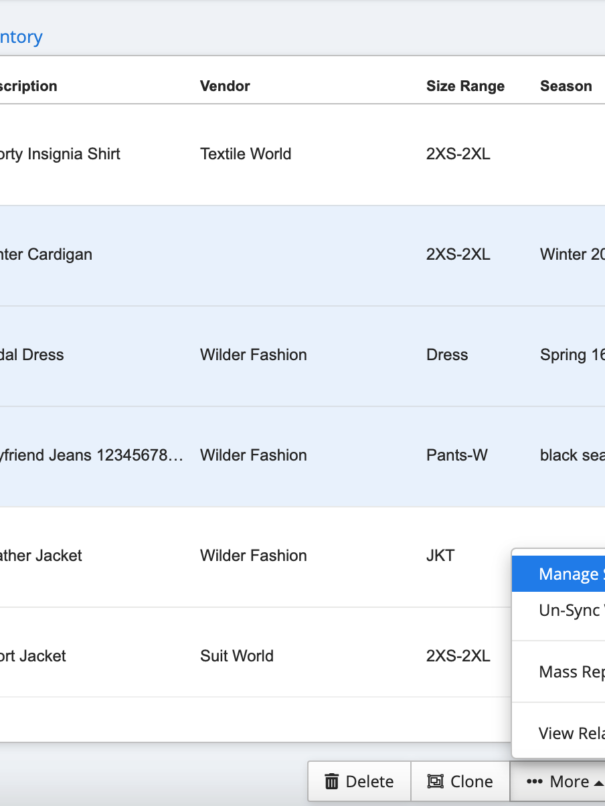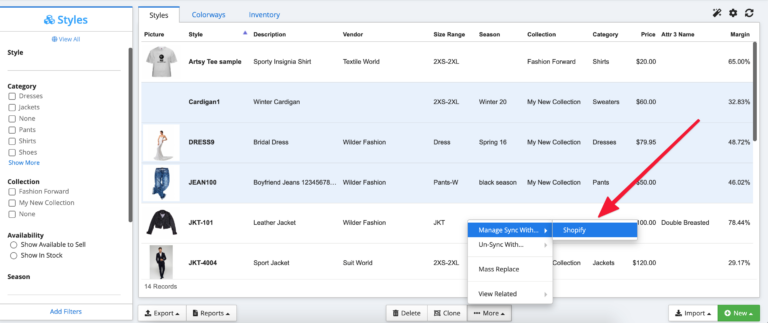Unlike traditional brick-and-mortar stores, where customers can physically try on items before purchasing, online store shoppers rely on product descriptions, images, and size guides to fill their shopping carts. This can lead to a number of returns, impacting both profitability and customer satisfaction.
Effective returns management turns a negative into a positive. In a nutshell, apparel e-commerce businesses can transform returns into opportunities for improved customer service, increased revenue, and strengthened brand loyalty.
Currently, over one-fifth of all clothing purchased in the US is returned, with the average return rate hitting 20.8%. This represents a significant increase of more than 50% since 2020.
So how can businesses help customers? Let’s take a look.
The Cost of Returns: A Cold, Hard Look at Apparel Brands And Their Problems
Online apparel shopping is a dream come true for any fashionista. The ease, the endless choices, the thrill of the delivery; it all clicks and marks for a great experience even if you are not moving from your couch.
But behind the curtains lies a brutal truth for businesses. What happens if a customer does not like the product they receive? For businesses, returns are the silent drain on profits, a constant threat to their bottom line.
Forget the marketing hype. Let’s talk about apparel fulfillment facts. Direct costs, the ones you can see and feel:
- Shipping: Boxes, labels, and trucks haul unwanted clothes back to your warehouse. Each return is a small, expensive journey, eating into your margins.
- Handling: Someone has to process those returns. Inspect, sort, restock. Time is money, and every minute spent on returns is a minute lost on growing your business.
- Restocking: Not all returns are equal. Some come back perfect, ready for another customer. Others? Damaged, worn, out of season. So, write-offs are inevitable.
- Refunds: The money you earned? It flows back out. And often, you lose the initial shipping costs too.
But the real danger lies in the indirect costs, the unseen damage that slowly weakens your business:
- Customer satisfaction: A difficult return experience leaves a bad impression. Customers become frustrated, and loyalty evaporates. They’ll go elsewhere, to brands that offer a smoother experience.
- Operational inefficiencies: Returns create chaos. Staff overwhelmed with a mountain of clothes, productivity grinds to a halt. Your business loses focus.
Now, it might seem like an unsolvable problem, but there’s a way out. Smart retailers are using data and technology to fight back. They’re minimizing errors before they happen, streamlining the returns management process, and even finding ways to profit from returned items. But more on that later.
The New Apparel Industry Strategies for Effective Returns Management
Enough about what returns mean for businesses and their impact. Let’s take a look at the strategies to combat this situation.
Before the Purchase: Stopping Returns at the Source
The best way to handle returns? Prevent them altogether. This means arming your customers with information, guiding them toward the right choices, and being upfront about your policies.
Product Information: No More Guessing Games
Forget blurry thumbnails and vague descriptions. Customers crave detail. High-quality images and videos from multiple angles let them inspect the garment from every side. Accurate size charts and fit guides eliminate the guesswork, while detailed fabric descriptions and care instructions set clear expectations. Don’t underestimate the power of social proof; customer reviews and testimonials with fit feedback can be invaluable. And for a truly immersive experience, consider 3D visualization tools and virtual try-on technology.
Personalized Recommendations: The Right Fit, Every Time
In the age of data, generic recommendations are simply not enough. Leverage the power of AI to suggest suitable sizes and styles based on a customer’s purchase history and preferences. Go further with size and fit prediction tools that use customer measurements to pinpoint the perfect match. The more personalized the experience, the less likely a customer is to hit that “return” button.
Clear Policies: No Fine Print, No Surprises
Transparency builds trust. Clearly communicate shipping costs, delivery times, and return options. Offer flexible return windows and a hassle-free return process. When customers know what to expect, they’re less likely to feel trapped or misled, reducing the chance of a return.
After the Purchase: The Art of the Smooth Return
Sometimes, despite your best efforts, returns are inevitable. But this doesn’t have to be a negative return experience. Make the process as smooth as possible to retain customer goodwill and minimize disruption to your operations.
Easy Returns: No Frustration, No Hassle
A complicated return process is a surefire way to lose customers. Provide a user-friendly online returns portal with clear instructions and multiple return options. Offer pre-printed return labels and convenient drop-off locations or pick-up services. The easier the return, the less damage it does to your brand.
Efficient Reverse Logistics: The Return Journey Optimized
Returns are a logistical challenge. Optimize your warehouse processes for receiving and processing returned items. Partner with reliable logistics providers for reverse shipping to ensure speed and efficiency. Implement automated systems for tracking and managing returns, keeping your inventory updated and your staff informed.
Communication is Key: Keeping Customers in the Loop
Uncertainty breeds anxiety. Keep customers informed throughout the return process with proactive communication. Provide status updates and notifications, and offer responsive customer support channels for inquiries and assistance. A little communication goes a long way in enhancing customer satisfaction.
ERP Systems: The Control Center
A good ERP system can integrate with your e-commerce platform to streamline the entire returns process. This allows for real-time tracking of returns, automated inventory updates, and efficient processing of refunds. But it’s not just about logistics. Use your ERP data to analyze return reasons, identify trends, and make informed decisions about inventory management, product development, and supply chain and vendor management.
Making Returns Profitable
Returns are a part of doing business, but they don’t need to result in a complete loss. With a strategic approach, you can turn those unwanted items into opportunities.
Learning from Every Return
Every return is a data point. Track return reasons and identify patterns to improve your product offerings and processes. Gather customer feedback to understand preferences and address pain points. Use this information to make your business stronger and more customer-centric.
Remarketing and Resale: Second Chances
Not all returned items are destined for the landfill. Inspect and refurbish returned items for resale, giving them a second life. Offer discounted prices on returned items through dedicated sales channels or outlet stores. This not only reduces waste but also generates additional revenue.
Sustainability
The impact of returns on your apparel fulfillment process is a growing concern. Minimize waste by donating or recycling unsellable items. Partner with organizations that promote sustainable fashion and circular economy principles. By embracing sustainable practices, you can reduce your environmental footprint and appeal to environmentally conscious consumers.
Wrap-up
You can make your apparel fulfillment process a breeze if you implement the right strategy. In this guide, we presented a few ways you can tackle returns effectively so you can create a much better service.
By understanding the true cost of returns, both the obvious and the insidious, you can take action. Arm your customers with information, guide them with personalized recommendations, and make the return process as painless as possible. Embrace technology, leverage your data, and find ways to turn those unwanted garments into opportunities.
And don’t worry. Every return is a chance to learn, adapt, and improve. It’s a chance to build a more sustainable, customer-centric business. In the competitive arena of apparel e-commerce, mastering the art of returns management isn’t just about minimizing losses; it’s about building a brand that stands for quality, transparency, and lasting customer relationships. And that, in the end, is the key to true success.









